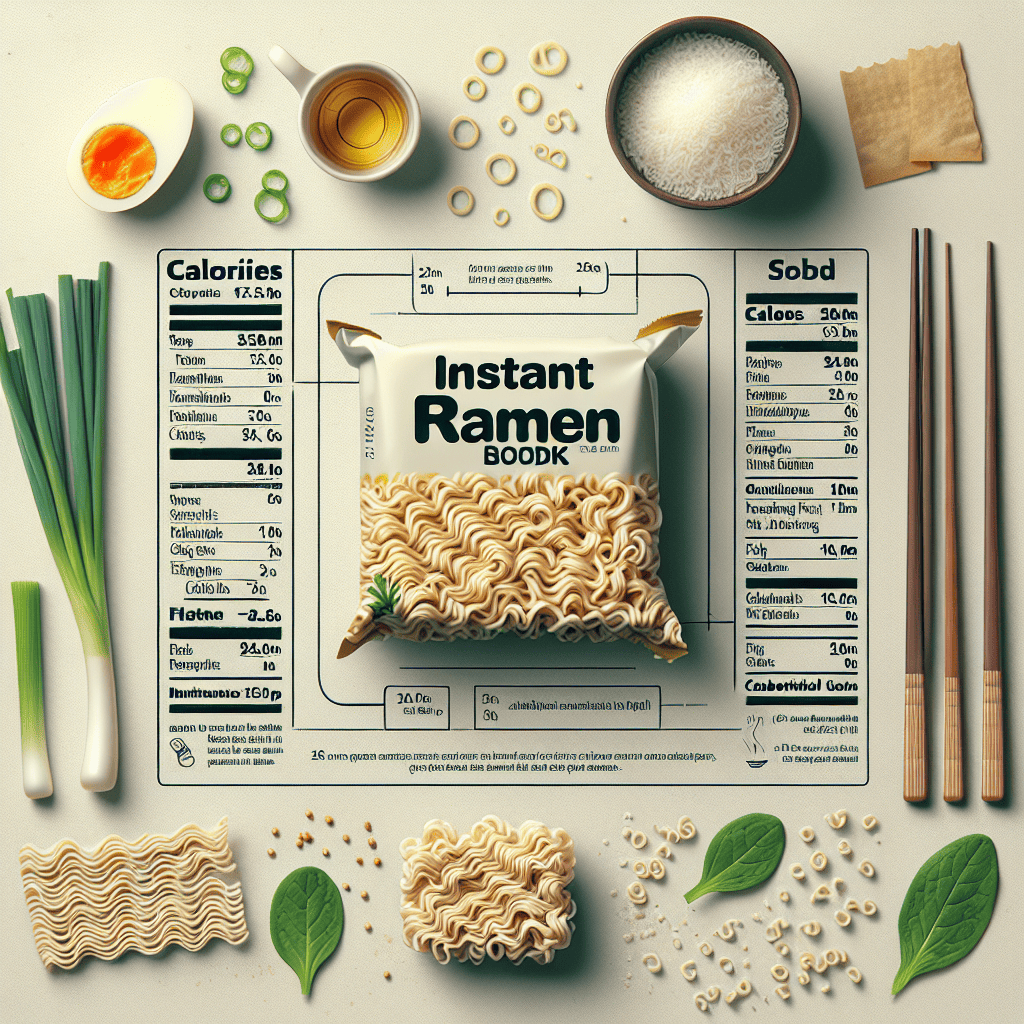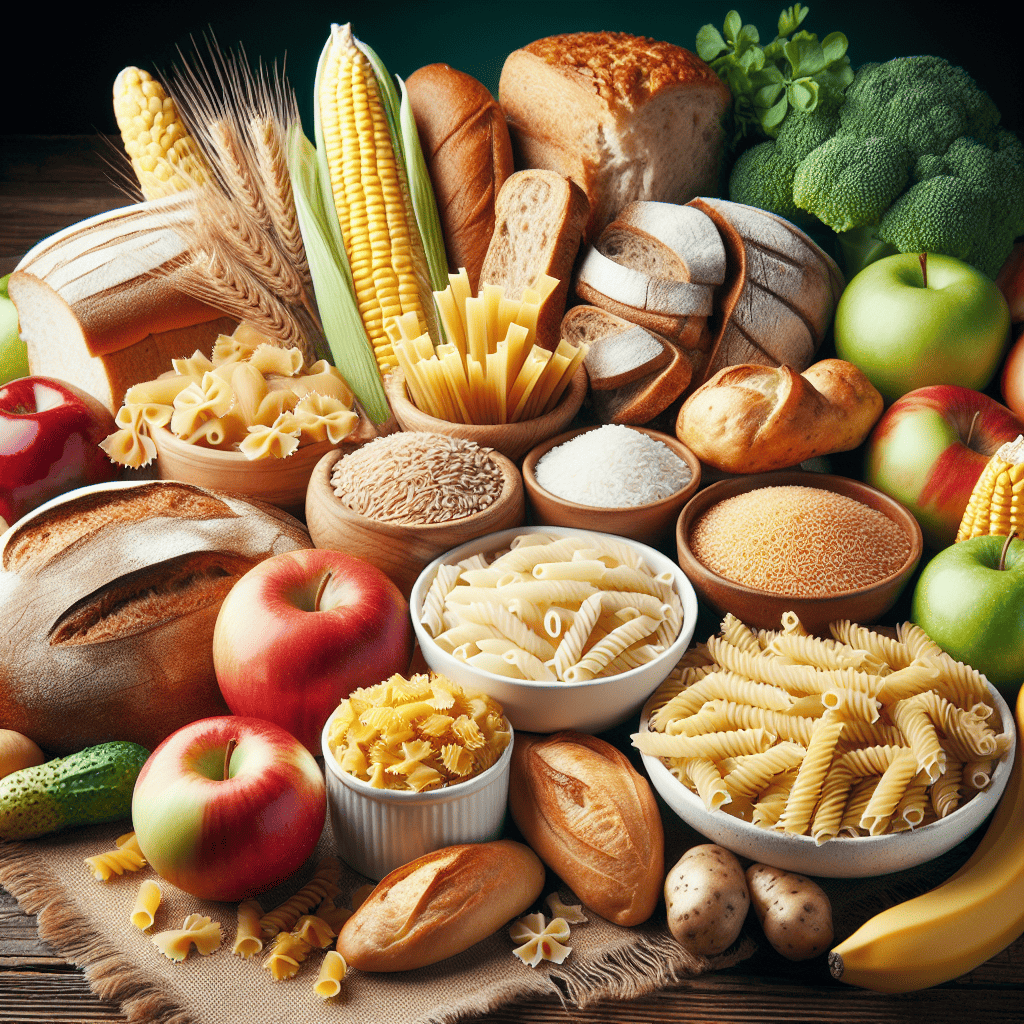Introduction: Instant noodles are a staple food for many, but their convenience comes with health risks. This blog post dives deep into the nutritional facts, risks, and ways to improve the healthiness of instant noodles to promote better well-being.
Table of Contents
- Noodles
- Nutritional Facts about Noodles
- Obesity and Other Risks of Noodles
- Nutrient-Fortified Noodles
- Ways to Make Noodles Healthier
Noodles
Instant noodles are a popular choice due to their convenience and affordability.
- Nutrient Content:
Instant noodles are a convenient and popular food choice for people looking for a quick and easy meal. The noodles come precooked and are typically dried to increase their shelf life. To prepare instant noodles, all that is required is to pour hot water over the noodles in a bowl and wait for a few minutes for them to soften and become ready to eat. This simplicity makes instant noodles a favorite among busy individuals or college students who may not have the time or resources for traditional cooking.
In addition to the noodles themselves, instant noodle packets often contain flavoring powder or seasoning oil to enhance the taste of the dish. These flavor packets come in a variety of flavors ranging from classic chicken and beef to more exotic options like curry or seafood. The seasoning is what gives each brand of instant noodles its unique taste, allowing consumers to choose flavors that suit their preferences. Some instant noodle brands also include dehydrated vegetables or protein such as dehydrated meat or tofu in the packets, adding more substance to the meal.
Despite being a quick and convenient meal option, instant noodles have faced criticism for their high sodium content and low nutritional value. The seasoning packets can be high in sodium, which may not be ideal for individuals with dietary restrictions or those looking to reduce their sodium intake. Additionally, the noodles themselves are often fried before they are dried, which can increase their fat content. While instant noodles can be a convenient occasional meal, it is essential to balance their consumption with a diet rich in fruits, vegetables, and other nutrient-dense foods to ensure a well-rounded and healthy diet.
Nutritional Facts about Noodles
Exploring the nutritional content of instant noodles.
- Nutritional Composition per Serving:
Instant noodles are a popular convenience food that is known for its easy and quick preparation. However, they are often criticized for their nutritional content. These noodles are typically high in calories, with one serving often containing a significant amount of calories, contributing to weight gain if consumed excessively. Moreover, they are usually high in fat, particularly unhealthy saturated fats, which can have negative effects on cardiovascular health when consumed in large quantities. In addition, instant noodles are loaded with sodium, with some brands containing alarmingly high levels. Excessive sodium intake is associated with an increased risk of high blood pressure and heart disease, making these noodles a concerning choice for those monitoring their salt intake.
In terms of essential nutrients, instant noodles are notably lacking in protein and fiber. Protein is an essential macronutrient that is crucial for various bodily functions, including muscle repair and growth, immune function, and hormone production. Without an adequate amount of protein in the diet, individuals may struggle to meet their daily protein needs, which can impact their overall health and well-being. Additionally, fiber is important for gut health, digestion, and maintaining a healthy weight. The lack of fiber in instant noodles can lead to digestive issues and an increased risk of conditions like constipation and other gastrointestinal problems. Therefore, relying heavily on instant noodles as a dietary staple can result in nutrient deficiencies and potential health complications in the long run.
While instant noodles may offer convenience and affordability, it is important for individuals to be mindful of their nutritional value and potential health risks. As a processed food product, instant noodles are often highly processed and filled with additives, preservatives, and artificial flavors that may have negative implications for health over time. It is advisable to consume instant noodles in moderation and pair them with nutrient-dense foods like vegetables, lean proteins, and whole grains to balance out the nutritional profile of the meal. Choosing healthier alternatives to instant noodles, such as whole grain pasta or noodle soups with added vegetables and protein sources, can help individuals make better choices for their overall health and well-being.
- Comparison with Other Pasta Types:
Instant noodles are a popular convenience food choice globally due to their quick preparation time and long shelf life. However, they are often highly processed and high in refined carbohydrates, which can lead to a quicker digestion and absorption in the body. This rapid digestion can result in a lower satiety effect compared to traditional pasta, which is typically made from whole wheat and contains more fiber. The lower satiety effect of instant noodles can contribute to overeating and ultimately have a higher impact on weight management.
In addition to being low in fiber, instant noodles are also often high in unhealthy fats and sodium. The high sodium content can lead to water retention and bloating, giving a false impression of weight gain. Furthermore, the high fat content in some instant noodle varieties can add extra calories to the diet, contributing to weight gain over time if consumed frequently. On the other hand, traditional pasta, especially whole grain options, can provide more nutrients like fiber, vitamins, and minerals, which can promote satiety and support weight management.
To mitigate the potential negative impact of instant noodles on weight management, it’s important to consume them in moderation and balance them with a variety of nutrient-dense foods. Choosing healthier alternatives like whole grain pasta, zoodles (zucchini noodles), or other whole food options can be beneficial for weight management. Additionally, incorporating plenty of vegetables, lean proteins, and healthy fats into meals can help improve the overall nutritional quality of the diet and support satiety. By making mindful choices and focusing on a balanced diet, individuals can enjoy instant noodles occasionally without compromising their weight management goals.
Obesity and Other Risks of Noodles
Discussing the health risks associated with consuming instant noodles.
- Heart Disease and Blood Pressure:
Regular consumption of instant noodles has been identified as a risk factor for various health problems, particularly heart disease and high blood pressure. Instant noodles are often high in refined carbohydrates, unhealthy fats, and sodium, which can contribute to the development of cardiovascular issues. The high levels of sodium in instant noodles can lead to elevated blood pressure over time, putting individuals at a greater risk of developing hypertension.
In addition to the unhealthy components like refined carbohydrates and fats, instant noodles also lack essential nutrients that are important for overall health. Consuming instant noodles as a staple in one’s diet may result in a lack of essential vitamins and minerals necessary for maintaining proper heart function and overall well-being. Regularly relying on instant noodles as a meal option can lead to nutrient deficiencies, which can further exacerbate the risk of heart disease and other related health conditions.
To reduce the negative impact of instant noodles on heart health, individuals are advised to consume them in moderation and to opt for healthier alternatives whenever possible. Incorporating a variety of nutrient-rich foods such as fruits, vegetables, whole grains, lean proteins, and healthy fats into the diet can help support heart health and reduce the risks associated with frequent instant noodle consumption. It is important to prioritize a balanced and diverse diet to ensure adequate nutrient intake and promote overall cardiovascular well-being.
- Effect on Weight and Metabolic Health:
Instant noodles, a convenient and popular food choice, contain monosodium glutamate (MSG) which is a flavor enhancer. Despite adding flavor to the noodles, MSG has been linked to weight gain, diabetes, and metabolic syndrome. Excessive consumption of MSG has been associated with an increased risk of obesity as it can disrupt the hormonal balance that regulates appetite. Furthermore, MSG has been known to stimulate the reward centers in the brain, leading to overeating and thus contributing to weight gain.
Apart from MSG, another concerning factor in instant noodles is their glycemic index. The glycemic index is a measure of how quickly a food raises blood sugar levels. Instant noodles typically have a high glycemic index, meaning they cause a rapid spike in blood sugar levels followed by a crash. Repeated consumption of high glycemic index foods like instant noodles can lead to insulin resistance, a precursor to diabetes. Moreover, the constant fluctuations in blood sugar levels from consuming high glycemic index foods may also contribute to the development of metabolic syndrome, a cluster of conditions that increase the risk of heart disease, stroke, and type 2 diabetes.
It is essential to be mindful of the ingredients and nutritional content of instant noodles, considering the potential health risks they pose. Opting for healthier meal options that are low in additives like MSG and have a lower glycemic index can help in maintaining a healthy weight and reducing the risk of metabolic disorders. While instant noodles may offer convenience and a quick meal solution, their long-term consumption should be moderated to protect overall health and well-being.
Nutrient-Fortified Noodles
Exploring the concept of adding essential nutrients to instant noodles to enhance their nutritional value.
- Benefits of Fortified Noodles:
Instant noodles are a popular and convenient food choice around the world, but they are often criticized for being high in carbohydrates, fats, and sodium while lacking essential nutrients. To address this nutritional concern, fortifying instant noodles with vital nutrients like vitamins and minerals can significantly improve their nutritional content. By enriching the noodles with these essential nutrients, they can contribute to better health outcomes for consumers who rely on them as a regular meal option.
Fortification of instant noodles with essential nutrients can be a crucial strategy to combat micronutrient deficiencies, such as lacking iron, vitamin A, and iodine, particularly in populations where these deficiencies are widespread. Vitamin A plays a vital role in maintaining good vision and a healthy immune system, while iron is essential for proper oxygen transport in the body. Iodine is crucial for thyroid function and overall metabolic health. By incorporating these nutrients into instant noodles, manufacturers can help alleviate specific micronutrient deficiencies that may be prevalent in certain regions or among specific demographics.
In addition to addressing nutrient deficiencies, fortifying instant noodles can also enhance their appeal to health-conscious consumers who are seeking convenient yet nutritious food options. By fortifying these noodles with essential vitamins and minerals, manufacturers can cater to a growing market demand for functional foods that not only offer convenience but also provide added health benefits. This fortification can also be a way to differentiate products in a competitive market, appealing to consumers looking for healthier alternatives within the instant noodle segment. Overall, fortifying instant noodles with essential nutrients presents a promising opportunity to improve the nutritional quality of these popular convenience foods and promote better health outcomes for consumers.
Ways to Make Noodles Healthier
Providing strategies for improving the health profile of instant noodles.
- Choosing Healthier Options:
When selecting healthier noodle varieties, it’s essential to look for options that are made from whole grains instead of refined grains. Whole grain noodles contain more fiber, vitamins, and minerals compared to their refined counterparts. This higher fiber content not only aids in better digestion but also helps you feel fuller for longer, promoting better satiety. Some popular whole grain noodle options include whole wheat pasta, brown rice noodles, quinoa pasta, and chickpea pasta. These varieties not only offer a nutritional boost but also add more complexity and flavor to your dishes.
To further increase the fiber content in your noodle-based meals, consider adding a variety of colorful and fiber-rich vegetables to your dishes. Vegetables like broccoli, spinach, bell peppers, zucchini, and carrots not only provide additional nutrients but also add more texture and flavor to your meal. You can also incorporate legumes such as beans, lentils, or chickpeas into your noodle dishes to boost the fiber and protein content. Additionally, topping your noodles with nuts or seeds like almonds, chia seeds, or pumpkin seeds can add a satisfying crunch while increasing the fiber and healthy fat content of your meal.
Another tip for enhancing the satiety of your noodle dishes is to pair them with lean protein sources such as grilled chicken, tofu, shrimp, or lean beef. Protein helps promote fullness and satisfaction, making it an essential component of a well-rounded and satiating meal. To further enhance the flavor profile of your dish without compromising on health, consider using herbs, spices, and healthy sauces like pesto, marinara, or a light olive oil-based dressing. By incorporating these tips into your meal planning and food choices, you can enjoy delicious and satisfying noodle dishes that are both nutritious and fulfilling.
- Reducing Sodium and Fat:
When it comes to lowering sodium and fat content in noodle dishes, there are several strategies you can implement to make your meals healthier without compromising on flavor. One effective way is to opt for low-sodium or reduced-sodium broths or bouillons as a base for your noodle soups or stir-fries. Alternatively, you can make your own broth using fresh ingredients like vegetables, herbs, and spices to control the amount of salt added. Additionally, using lean proteins such as chicken breast, tofu, or shrimp instead of fatty meats like pork or beef can help reduce the fat content of your dish. Similarly, choosing whole wheat or vegetable-based noodles over traditional white noodles can increase the fiber content of your meal and provide more nutrients. Finally, flavoring your dishes with herbs, spices, citrus juice, or vinegar instead of salt can enhance the taste without the need for excess sodium.
To incorporate nutrient-rich ingredients into your noodle dishes, consider adding a variety of vegetables like bell peppers, broccoli, spinach, carrots, and mushrooms. These vegetables not only add vitamins, minerals, and fiber to your meal but also provide color and texture. Another option is to include legumes such as lentils, chickpeas, or edamame for plant-based protein and additional fiber. Nuts and seeds like almonds, sesame seeds, or peanuts can also be sprinkled on top for a crunchy texture and healthy fats. Furthermore, incorporating superfoods like kale, seaweed, or chia seeds can further boost the nutritional value of your dish. Experimenting with different combinations of ingredients can help you create delicious and nutritious noodle dishes that are both satisfying and beneficial for your health.
In conclusion, achieving a balance between reducing sodium and fat content while incorporating nutrient-rich ingredients into noodle dishes requires a thoughtful approach to recipe development. By making simple swaps like using low-sodium broths, lean proteins, and whole grain noodles, you can lower the unhealthy components in your meals. Meanwhile, adding a variety of colorful vegetables, legumes, nuts, seeds, and superfoods can elevate the nutritional profile of your dish. Remember to focus on enhancing flavors with herbs and spices rather than relying on salt, and don’t be afraid to get creative with your ingredient choices. With these tips in mind, you can enjoy nourishing and delicious noodle dishes that support your well-being.




